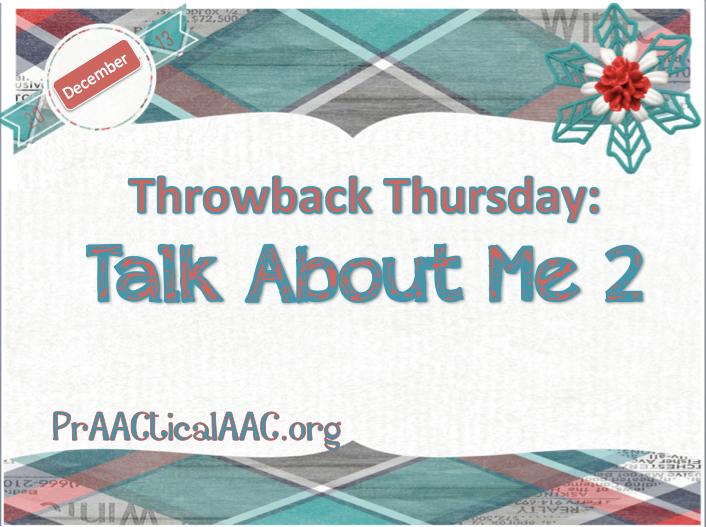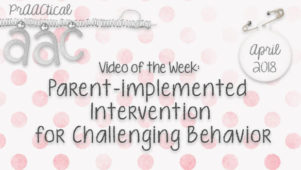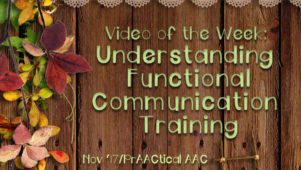Throwback Thursday: Talk About Me 2

originally published December 13, 2012
We write about a lot of AAC strategies and we often give examples of different types of learners. Sometimes the learners we work with have more challenges than we explain. Lest you think, we do not see the really ‘challenging’ learners, we do, we really do. For those individuals with more challenges than most, sometime we are asked, well what do a few visual supports or AAC strategies do? What difference do they make?
The truthful answer is A LOT.
Here are a just a few recent examples from some really amazing families.
- When a mom is on the phone, a young adult brings in a timer and sets it so mom will get off the phone and go sit with her.
- When a communication book is forgotten on an emergency trip to the dentist, drawing on a napkin is enough to keep everyone calm so that the dentist can perform the examination and fix the problem without unnecessary sedation.
- When a storm is coming, a social story is looked at again and again while standing by the window.
- When a young woman does not like the next weekend activity, she can argue with picture symbols.
- When a young man is sick, he can use an AAC app to indicate ear and medicine.
- When a young man does not want to do his chores, he goes into his room and puts a stop sign on his door.
- When consequences for challenging behavior are necessary, the consequences are understood, even if they are not liked.
But…. how did the families get there
- Many years of modeling visual language (aided language input)
- Explaining scary situations with visual language
- Explaining illness with visual language
- Setting up visual organization systems to teach new skills (i.e, labels, diagrams, check offs, signs, consequence maps, etc.
- Many years of honoring visual communication from the learner (that means honoring and respecting the ‘good, bad, and ugly’, even if it just to say I understand)
Think of visual language as the language of the learner and proceed accordingly.
Filed under: PrAACtical Thinking
Tagged With: Challenging Behavior, Complex Communication Needs, Visual Strategies
This post was written by Robin Parker




